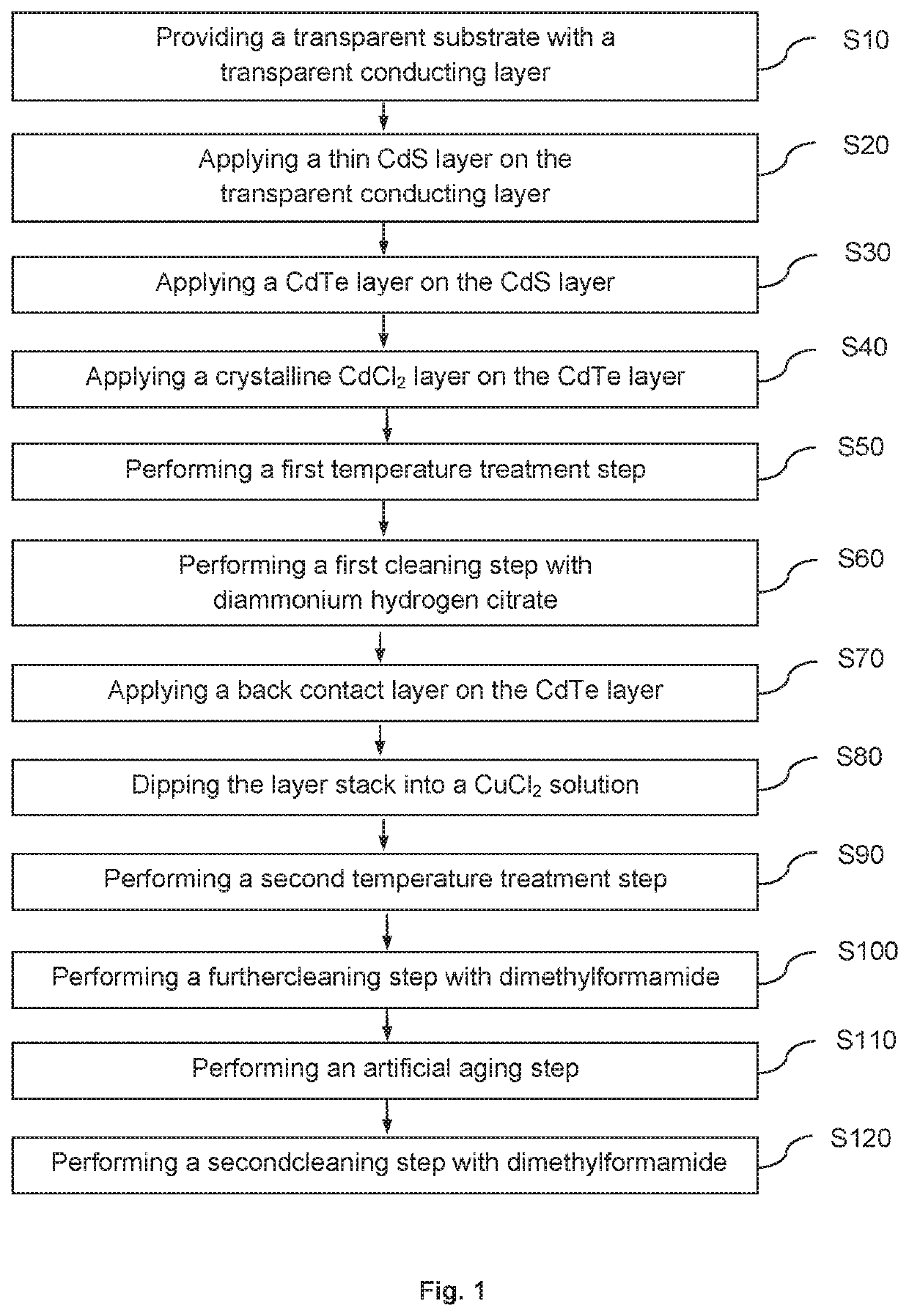METHOD FOR PRODUCING A CdTe THIN-FILM SOLAR CELL
a technology of cdte and solar cells, applied in the direction of basic electric elements, electrical apparatus, semiconductor devices, etc., can solve the problems of degrading the characteristics of cdte solar cells and inability to precisely control parameters, so as to improve the electric characteristic of the produced solar cells
- Summary
- Abstract
- Description
- Claims
- Application Information
AI Technical Summary
Benefits of technology
Problems solved by technology
Method used
Image
Examples
Embodiment Construction
[0036]The exemplary embodiment of the method according to the application shown in FIG. 1 starts with providing a transparent substrate made of glass with a transparent conducting layer made of ITO on it (S10), wherein the transparent conducting layer serves as a front contact of the CdTe solar cell which will be produced.
[0037]On the transparent conducting layer, a 30 nm thick CdS layer is applied using closed space sublimation (CSS) technique (S20). The low thickness of the CdS layer is important for achieving good characteristics of the produced CdTe solar cell. However, the thickness cannot be reduced in any order due to other process steps, in particular to the activation step and temperature treatment steps, and due to the necessity to prevent microshunts or pinholes within the CdS layer. Therefore, 30 nm has been found by the inventors to be the best choice.
[0038]On the CdS layer, a 4 μm thick CdTe layer is applied using CSS technique (S30).
[0039]Thereafter, a80 nm thick crys...
PUM
 Login to View More
Login to View More Abstract
Description
Claims
Application Information
 Login to View More
Login to View More - R&D
- Intellectual Property
- Life Sciences
- Materials
- Tech Scout
- Unparalleled Data Quality
- Higher Quality Content
- 60% Fewer Hallucinations
Browse by: Latest US Patents, China's latest patents, Technical Efficacy Thesaurus, Application Domain, Technology Topic, Popular Technical Reports.
© 2025 PatSnap. All rights reserved.Legal|Privacy policy|Modern Slavery Act Transparency Statement|Sitemap|About US| Contact US: help@patsnap.com



